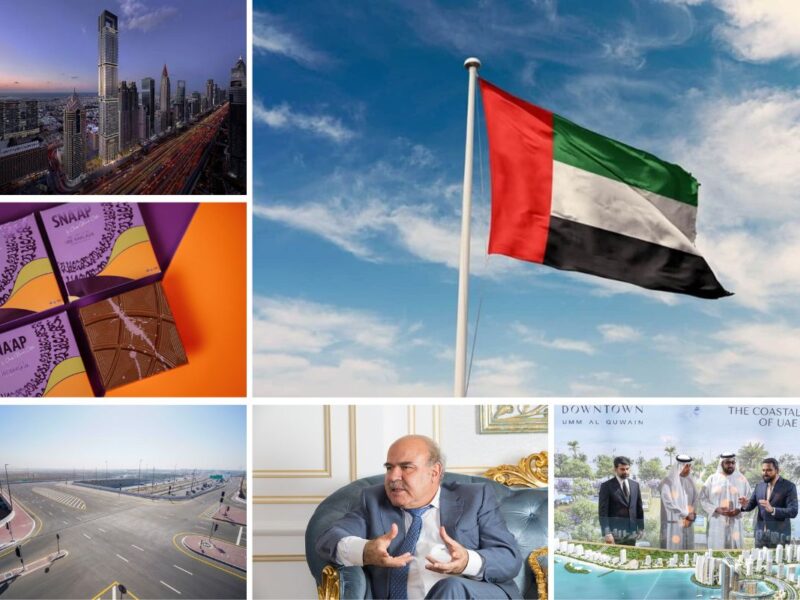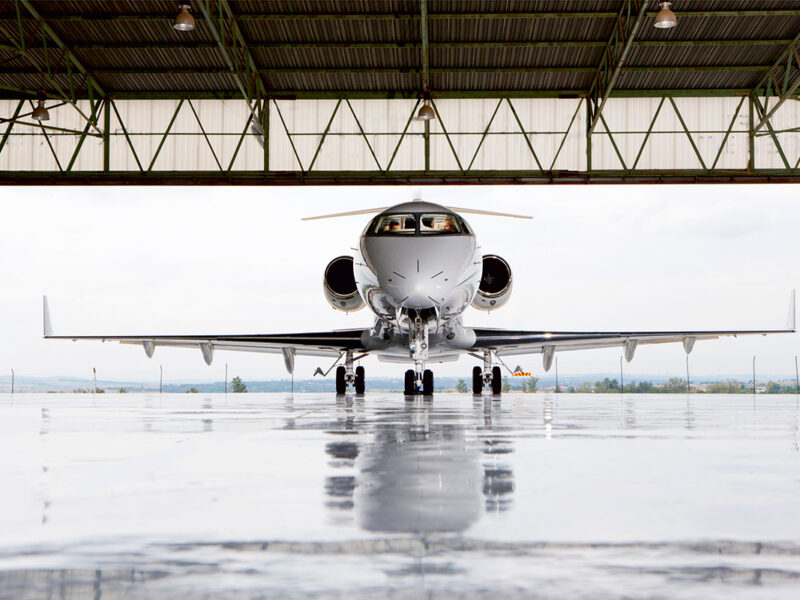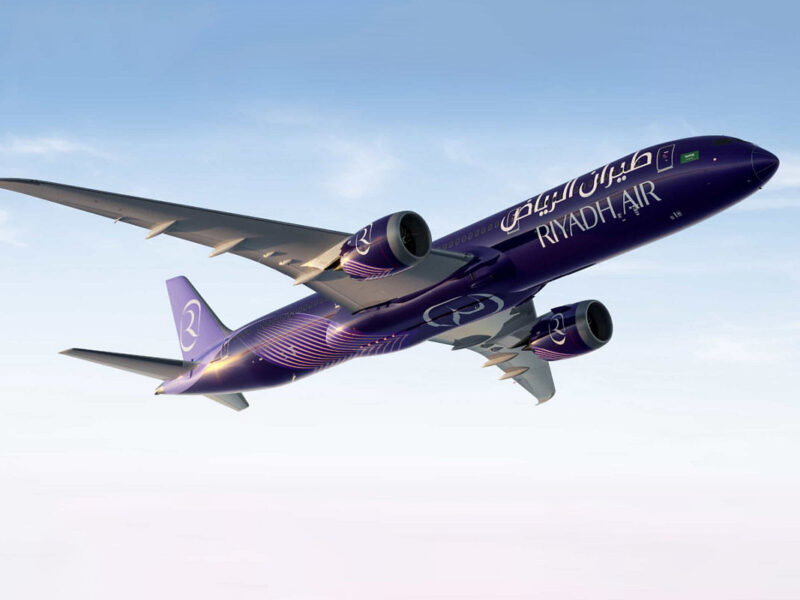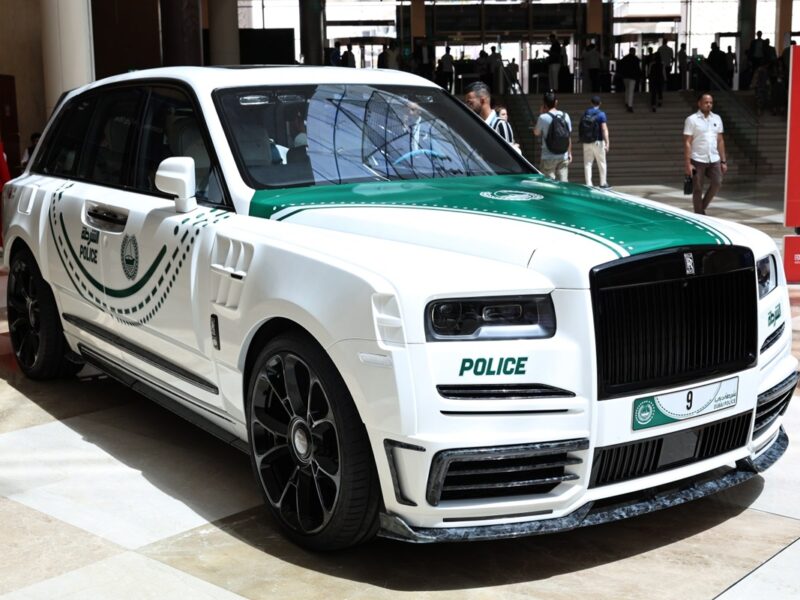Richard Lugg considers himself an innovator, entrepreneur and someone who thinks outside the box. But orchestrating a phone conversation during working hours, with him on the east coast of the United States and Arabian Business based in Dubai, can present quite a challenge. That said; if Lugg’s ambitious plans prove fruitful, everyone will soon become a lot closer and the constraints of time and space will soon be a distant memory.
At the Paris Airshow in 2011, Lugg unveiled SonicStar, a supersonic passenger aircraft which will target the world’s super rich and which will be capable of flying from London to New York in just two hours. A prototype of the craft is set to be launched by 2023, meaning time zones will no longer be an issue and executives will be able to leave New York after breakfast, stop off for meetings in London and book a table for lunch in Dubai.
Rumours had circulated that Dubai’s Emirates Airline might resurrect supersonic travel in the form of the once beloved Concorde, but this was recently dismissed by management as too costly and hazardous to the environment to operate.
Built by the British and the French for transatlantic travel, Concorde was the darling of the aviation world when it made its debut in March 1969, but was retired in November 2003, with operators Air France and British Airways citing low passenger interest following a July 2000 crash and high maintenance costs.
“Concorde did it but it was done poorly as the technology wasn’t there to make it efficiently viable. The issues with sonic boom and the environment had to be addressed first and foremost,” Lugg says of the now-retired aircraft.
While Dubai may be reluctant to resurrect Concorde, Lugg believes the Middle East might still be the catalyst in the development of the next generation of supersonic commercial jets and he reveals that he is in active talks in the region to finance the project and bring it to the stage where an aircraft will be ready to take to the skies.
“We have several, five or six, fairly interesting and serious discussions with geographic locations. We are going to be in Abu Dhabi presenting at the Global Aerospace Summit there in April and in Abu Dhabi we have had talks with financial institutions and funds there… Also Qatar and Kuwait and Saudi Arabia as well.
“We have been working the area since 2009. Ideally we are looking for a partner who will see the long-term view — at least a decade plus — to finance this project and scale to a manufacturing scenario, with viable prototypes. We are positioned with the capability to bring that kind of expertise into the region or country and build something from the ground up.”
With the discussions in place and the attention-grabbing flight times making the headlines, what exactly is the pitch behind SonicStar?
Article continued on next page…
The jet is set to reach speeds of up to Mach 4.4, which is 2,980 miles per hour, and at an altitude of around 62,000 feet. The propulsion is projected to be 30 percent more fuel efficient than the Rolls-Royce Olympus 593 engine which ran on the Concorde. One of the reasons Concorde was always vilified was because of its sonic boom, but SonicStar aims to avoid this by using what is known as electromagnetic drag reduction technology.
It all sounds very complex, but Lugg certainly has the credentials to pull off such a feat. His CV includes stints working on the Space Shuttle and on cruise missiles for the US Air Force and he boasts the likes of NASA, Lockheed Martin, Boeing and Rolls-Royce as previous clients.
He has worked in engine and aircraft design and has been involved in projects focusing on developing composites, power electronics, alternative energy and nano-scale heating and cooling systems. As a result, he is confident that his team at Hypermach, the firm he set up in 2008, can bring the SonicStar to life.
“Basically the general consensus was that, as aerospace professionals and entrepreneurs, we recognised if it was going to be a success over the long term, new technology needed to be created.
“My background is on the military aerospace side and aircraft fighter programmes, where we always pushed the envelope… So that was the starting point. The concept started in 2010. We did a lot of research and modelling to really look at what the serious issues were and we also recognised that to get the range and develop a viable economic model it really needed to be revolutionary on the propulsion side.
In terms of where the project is at present, Lugg says engine testing began in 2005 and 2006 and its findings led to a contract from the US Air Force and Rolls-Royce. “With projects like this, and the risk and time, we build small first and then build full scale… On the airframe side we have been working on the design of SonicStar [and] we start tests in the wind tunnel in the States this spring.”
Initial funding has been sourced from wealthy individuals who have seen the long-term potential for the project. “Our campaign is pretty international and we have made a point of not bringing in institutional capital. [Current capital] is from private individuals and high net worth angels. We have been good at getting to the design and build [stage] on not a huge amount of capital investment,” Lugg explains but declines to outline how much has been injected into the project to date.
On Hypermach’s website it states the “project is supported by the UK government” and Lugg says it has had positive feedback from London. “We have had support on the partnership side but we’ve not had financial support. We are going to be receiving financial support but it has not happened as quickly as we would have liked.”
Lugg’s education includes a BA in Mathematics from Maine University and an MS in Aerospace Engineering from Alabama University, but his early education in the UK brought him into contact with some influential schoolmates: British royalty.
“We have had some serious presentations with the UK government and diplomats and the royal family but I also have a connection with the royal family as I went to school with one of the princes — with Andrew — to a well-known boarding school in the northern UK, so that is the initial connection,” Lugg says.
Article continued on next page…
Rumours had spread on the grapevine that Prince Charles’ recent visit to the Gulf was going to be used to help open doors for the company, but Lugg refutes this, saying that his discussions with regional players have been ongoing for some time and he has not used his royal connections to open any doors.
“At the same time, before [support from the UK] happened, we had been on the continent and initiating relationships in the Middle East and looking to areas like the UAE where there could be some partnerships and investment opportunities… We have had interest in the project from individuals and companies in the [Middle East] region.
“The UK is going very well with the government support and we have a lot of money going into the technologies, but we want a best fit for the company. We have been lucky and successful and are at a point where we have had some serious discussions with professional money management and that is from some of the talks we are having in the Middle East.”
Arab investment in this sort of venture isn’t wholly unheard of, especially when you look at the link that already exists between Sir Richard Branson’s Virgin Galactic and Abu Dhabi.
The Abu Dhabi government’s Aabar Investments bought a 35 percent stake in Virgin Galactic in 2009 for $300m and the Virgin Group founder told reporters last month he believes his space travel company could one day rival Emirates Airline in offering long-distance travel by air.
Branson says the first commercial flight — with himself, his wife and their two children on board — is expected to launch within a few months. He expected regular passenger services to be in place in about 12 years, offering a real alternative to aeroplane travel.
“I think it really will be the start of a whole new space era,” Branson, who founded airlines Virgin Atlantic and Virgin Australia, said in Dubai last month.
“I think one day we may even give Emirates a run for their money. Our spaceship is built in the same shape as an aeroplane; ten years from now I think we’re going to be going at 18,000 miles per hour around the world, so maybe one hour from London to Singapore.
“We have 300 engineers beavering away on it. We have two more test flights [and we should] go into space in three to four months time. If myself and my family are not in space by the end of the year, I would be very, very worried.”
Flights on board a Virgin Galactic spaceship — of which the company has two at the moment — will initially cost $250,000 and the eccentric entrepreneur claimed it would take “about three years” for the company to make a profit.
Article continued on next page…
So what is Lugg’s take on his high-profile rival who has garnered dozens of celebrities eager to sign up to buy tickets? “I would say the projects are very similar, in that it is cutting-edge technology.
“They took the entrepreneurial approach where you are lean, mean and aggressive. They went ahead and built a couple of spaceships and tested the waters to show demand existed and started selling airline tickets ahead of the curve of a commercial vehicle being built.
“It is a model that could work. Are we doing it? No. We have been asked [to start selling tickets] and it is a consideration, but we want to hit another few milestones first in the next 24 months on our programme.
“Virgin Galactic was using known aerospace propulsion knowledge. Ours is known but is being done differently so there is some work to be done. The models are very similar and the pay-offs large,” he says.
Ultimately, Lugg says the company will need around $2-3bn in order to make SonicStar a reality by 2023, but he believes it is a project which will change the face of transport and how humans interact forever.
“If SonicStar is successful and we are taking orders in the business jet we have a plan to scale up and we have had three potential large-scale customers who would consider designing and building something larger if we got serious about what we are doing.”
With talks taking place in the Middle East next month, things certainly seem to be getting serious. “Ideally we would like to have the project in one region, maybe the Middle East, with one government or investment arm… one location would be ideal.”
“An invention needed to be created to go to the next level on the propulsion side… Then we will have an aircraft that could change the world and how we operate for air transport on the civil side.”
Let the new space race begin.








